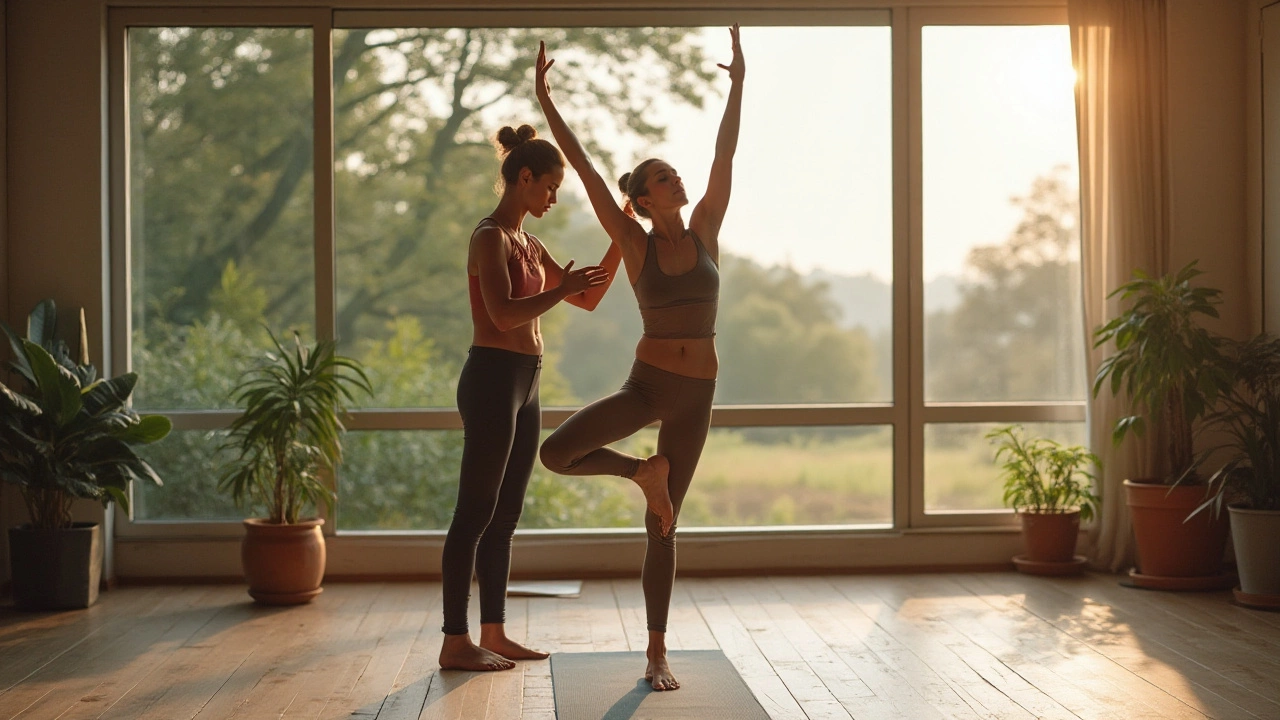Yoga Tips, Benefits & Guides for Every Level
Thinking about adding yoga to your routine? You’re not alone. People of all ages and fitness backgrounds are turning to yoga for flexibility, stress relief, and a stronger core. The good news? You don’t need a fancy studio or years of experience to start seeing results.
Why Yoga Works for Your Body and Mind
First off, yoga isn’t just a series of poses—it’s a whole‑body practice that links movement with breath. When you flow through a sequence, you’re training muscles to lengthen and strengthen at the same time. That dual action helps improve posture, reduces joint pain, and can even boost metabolism.
On the mental side, focusing on breath anchors you in the present moment. Many folks report feeling calmer after a short session, and that’s because yoga triggers the parasympathetic nervous system, the part of your body that promotes relaxation.
Another perk is accessibility. Whether you have five minutes or an hour, you can adjust the intensity and length of your practice. This flexibility makes yoga a sustainable habit for busy schedules.
Simple Yoga Routines to Try Today
Here are three easy routines you can slot into any day. No props required, just a mat or a comfy floor space.
1. Morning Wake‑Up (5‑minutes)
• Cat‑Cow (Marjaryasana/Bitilasana) – 8 breaths
• Downward Dog (Adho Mukha Svanasana) – 5 breaths
• Sun Salutation A – 3 rounds
This quick flow warms up your spine, awakens muscles, and sets a positive tone for the day.
2. Midday Stretch (10‑minutes)
• Standing Forward Fold (Uttanasana) – 6 breaths
• Warrior II (Virabhadrasana II) – 5 breaths each side
• Tree Pose (Vrikshasana) – 5 breaths each side
These poses counteract sitting, release tension in the hips, and improve balance.
3. Evening Unwind (15‑minutes)
• Child’s Pose (Balasana) – 1 minute
• Reclined Twist (Supta Matsyendrasana) – 30 seconds each side
• Legs‑Up‑the‑Wall (Viparita Karani) – 3 minutes
Ending with gentle inversions helps lower cortisol levels and prepares your body for sleep.
Mix and match the sequences based on how you feel. The key is consistency—not perfection. Even a short, daily practice builds habit and yields benefits over time.
If you’re new, start with a few breaths in each pose and focus on alignment rather than depth. As you get comfortable, you can explore variations or add props like blocks or straps.
Remember, yoga is a personal journey. Listen to your body, respect your limits, and celebrate the small milestones—like holding a pose a few seconds longer or feeling less stiffness after a long desk day.
Ready to give it a try? Grab a mat, set a timer, and pick one of the routines above. You’ll be surprised how quickly you notice a shift in energy, mood, and flexibility.

Pilates vs Yoga: Which Practice Suits You Best?
Maeve Larkspur Nov 27 0Pilates and yoga are both popular forms of exercise that offer a range of physical and mental benefits. While both practices focus on developing strength and flexibility, they cater to different needs and fitness goals. This article explores the differences between Pilates and yoga, including their origins, benefits, and how each might suit various lifestyles and fitness preferences. Discover which practice might be best for you based on your personal health objectives and daily routine.
More Detail